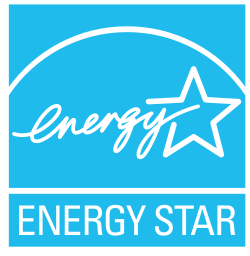Energy Star

The Energy Star service mark is placed on energy-efficient products.
|
|
| Founded | March 15, 1992 |
|---|---|
| Founder | John S. Hoffman |
|
Area served
|
United States, Australia, Canada, European Union, Japan, New Zealand, Taiwan |
| Website | www |
Energy Star (trademarked ENERGY STAR) is an international standard for energy efficient consumer products originated in the United States. It was created in 1992 by the Environmental Protection Agency and the Department of Energy. Since then, Australia, Canada, Japan, New Zealand, Taiwan, and the European Union have adopted the program. Devices carrying the Energy Star service mark, such as computer products and peripherals, kitchen appliances, buildings and other products, generally use 20–30% less energy than required by federal standards. In the United States, the Energy Star label is also shown on EnergyGuide appliance label of qualifying products.
The Energy Star program was developed by John S. Hoffman, inventor of the Green Programs at EPA, working closely with the IT industry, and implemented by Cathy Zoi and Brian Johnson. The program was intended to be part of a series of voluntary programs, such as Green Lights and the Methane Programs, that would demonstrate the potential for profit in reducing energy consumption and greenhouse gases by power plants.
Initiated as a voluntary labeling program designed to identify and promote energy efficient products, Energy Star began with labels for computer and printer products. In 1995 the program was significantly expanded, introducing labels for residential heating and cooling systems and new homes. At this time, newly formed energy efficiency programs, administered by ratepayer funded entities such as utilities, agreed through the Consortium for Energy Efficiency to begin promoting their programs using the ENERGY STAR brand. In 2000, the Consortium for Energy Efficiency was directed by members to begin an annual survey of ENERGY STAR impact.
...
Wikipedia
